AMD's Ryzen 7 5800X3D Launches April 20th, Plus 6 New Low & Mid-Range Ryzen Chips
by Ryan Smith & Gavin Bonshor on March 15, 2022 9:00 AM EST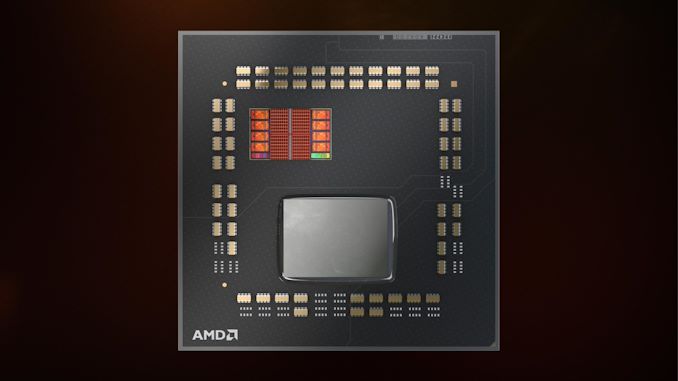
Since the launch of AMD’s Zen 3-powered Ryzen 5000 desktop processors in late 2020, the company’s retail desktop chip offerings have been rather static. With AMD facing heavy demand for products on multiple fronts – from CPUs to GPUs to console APUs – and all during an unprecedented chip crunch, the company has held back on expanding its desktop offerings. Instead, AMD has focused its limited TSMC 7nm wafer allocations on trying to keep up with demand for some of their most important (and highest margin) products, such as server CPUs, laptop chips, and high-end desktop CPUs.
However, as the chip crunch has ever-so-slightly abated, AMD is now turning their attention back to the desktop space, to finally focus on fleshing out their desktop processor product lineups. We saw our first glimpse of that last week with the announcement of the long-awaited Threadripper Pro 5000 series for workstations. And now for this week the company is announcing the launch dates of several new Ryzen desktop processors.
Leading the charge is AMD’s new Ryzen 7 5800X3D. Previously announced at CES 2022 with a “spring” launch timeframe, the 5800X3D is perhaps the most interesting desktop chip design to come out of AMD in the last few years, thanks to its inclusion of additional L3 cache in the form of AMD’s die-stacked V-Cache. AMD is specifically pitching this 8 core processor as the ultimate chip for gaming – on the basis that gaming performance benefits in particular from the extra L3 cache – and will be releasing it on April 20th for $449.
Meanwhile, AMD is also using this moment to finally fill out the lower half of what would be its traditional chip product stack, which up until now stopped with the relatively powerful hex-core Ryzen 5 5600X at $230. Altogether AMD is launching 6 new processor SKUs to fill out the sub-$300 segment, including a pair of 6-core Zen 3 CPUs and an 8-core Zen 3 CPU. More unusually, the other 3 parts are new Zen 2 chips, which are being used to round out their cheapest processors. One of these SKUs includes an APU and will be sold under AMD’s Ryzen 4000 product line, with sales expected to start on April 4th.
Finally, in a move as equally unexpected as launching new Zen 2 SKUs in 2022, AMD is also finally relenting on enabling official support for Ryzen 5000 processors on AMD’s older 300 series chipsets. Though the company has long declined to support the newest Zen 3 chips on these older chipsets, almost a year and a half later AMD is finally changing their tune, and will be releasing (and supporting) the necessary code to motherboard manufacturers to add support for the chips in new BIOSes. To that end, Ryzen 5000 support should start appearing in beta BIOSes in April and May.
Ryzen 7 5800X3D: “The World’s Fastest Gaming CPU”
Headlining today’s announcements from AMD is the announcement of a release date for the company’s innovative Ryzen 7 5800X3D. This chip and its full specifications was announced back as part of AMD’s CES 2022 presentation, though at the time AMD was still ramping up production for a spring launch. Now spring has nearly sprung, and the Ryzen 7 5800X3D’s launch date has been locked down to April 20th.
When it launches, the 5800X3D will be just the second chip from AMD to launch with V-Cache, following the Milan-X family, which at last check is still expected before the end of this month. The 5800X3D, in comparison to the massive Milan, is a fair smaller-scale deployment of AMD’s cache stacking technology. But none the less it is the first desktop processor to receive the technology, and will be our first real taste at what adding all of that extra L3 cache can do for AMD’s Zen 3 CPU architecture.
| AMD Ryzen 5000 Series Processors for Desktop (>$200) Zen 3 Microarchitecture (Non-Pro, 65W+) |
|||||||||
| AnandTech | Core/ Thread |
Base Freq |
1T Freq |
L3 Cache |
iGPU | PCIe | TDP | SEP | |
| Ryzen 9 5950X | 16 | 32 | 3400 | 4900 | 64 MB | - | 4.0 | 105 W | $590 |
| Ryzen 9 5900X | 12 | 24 | 3700 | 4800 | 64 MB | - | 4.0 | 105 W | $450 |
| Ryzen 9 5900 | 12 | 24 | 3000 | 4700 | 64 MB | - | 4.0 | 65 W | OEM |
| Ryzen 7 5800X3D | 8 | 16 | 3400 | 4500 | 96 MB | - | 4.0 | 105 W | $449 |
| Ryzen 7 5800X | 8 | 16 | 3800 | 4700 | 32 MB | - | 4.0 | 105 W | $350 |
| Ryzen 7 5800 | 8 | 16 | 3400 | 4600 | 32 MB | - | 4.0 | 65 W | OEM |
| Ryzen 7 5700X | 8 | 16 | 3400 | 4600 | 32 MB | - | 4.0 | 65 W | $299 |
| Ryzen 5 5600X | 6 | 12 | 3700 | 4600 | 32 MB | - | 4.0 | 65 W | $230 |
As a quick refresher, the cache-heavy chip will have a single Zen 3 CPU core chiplet with all 8 cores enabled, and the extra 64MB of V-Cache stacked on top for a total of 96MB of L3 cache. AMD is essentially treating this as a larger cache version of the current 8-core 5800X, however clockspeeds are going to be a bit different. The 5800X3D will have a base clockspeed of 3.4GHz and a turbo clockspeed of 4.5GHz, both reduced a bit from the regular 5800X. According to AMD, this is because they’ve opted to hold the chip’s TDP at the same 105W level as the original, and thus clockspeeds had to be dialed down some to accommodate the power consumption of the additional cache.
In either case, AMD has decided to go after the gaming market with their beefy 8-core CPU. As detailed by the company back at CES 2022 and reiterated in today’s announcement, AMD has found that the chip is 15% faster at gaming than their Ryzen 9 5900X. As our own Dr. Ian Cutress noted at the time: “The extra cache is meant to help with communications with discrete graphics cards, offering additional performance above the regular R7 5800X. Productivity workloads are less likely to be affected, and for those users the regular Ryzen CPUs are expected to be better.”
And, perhaps most critically, we now have a price for the chip: $449. The price comes as AMD recently enacted what appears to be an across-the-board price cut for their Ryzen 5000 desktop chips, which among other things saw the original 5800X drop from around $400 to $350. At current prices, this means the 5800X3D and its extra 64MB of L3 cache carry a $100 premium, which is a stiff increase for just the performance unlocked by a larger cache. But it may prove more than worth it if it’s enough to truly vault the chip into the top spot for gaming workloads.
In practice, I expect the 5800X3D to live (or die) based on pricing. AMD’s 12-core Ryzen 5900X is also $449, so buyers who are willing to part with that money will be choosing between 4 more CPU cores or a single Zen 3 chiplet with 64MB more L3 cache. This gives the 5800X3D a very narrow scope to excel at, since most workloads that can put 8 cores to good use can do even better with 12. Games are one of the only exceptions to this rule: not only are multiplatform games designed against 8 core CPUs to begin with, but out of necessity they often have one heavily-serial master thread that bottlenecks efforts efforts to spread out work over a large number of cores.
In any case, gamers will get a chance to get their hands on the chip in just a bit over a month, when it goes on sale on April 20th. Like AMD’s other X chips, this one doesn’t come with a cooler, so you’ll have to bring your own for this launch.
Expanding Down: 6 New Ryzen 5000 CPUs & Ryzen 4000 APUs
As well as launching a new high-end gaming chip, AMD is also using events over the next few weeks to finally fill out the lower half of their chip product stack. Since the launch of the Ryzen 5000 series back in November of 2020, the cheapest chip AMD has offered is the 6-core Ryzen 5 5600X, which even following recent price cuts is still $229. Due to AMD being constrained by the ongoing chip crunch, the company has been opting to put its limited allocations into higher-end products, which are more profitable than the kind of lower-margin products that make up the sub-$200 market.
This has left Intel with essentially free reign of the low-to-mid-range market for the last several months. While the boys in blue are not entirely insulated from the chip crunch either, by owning their own fabs Intel isn’t competing with other vendors for wafer allocations. Consequently, Intel has been the only vender shipping chips suitable for the sub-$200 market for the better part of the last year.
But Intel’s uncontested dominance of that market is set to finally come to an end in early April, when AMD launches several new Ryzen chip SKUs to flesh out their sub-$300 line. With the new chips ranging in price from $99 to $299 and offering between 4 and 8 cores, AMD is very clearly lining themselves up to go against Intel’s full 12th Gen Core (Alder Lake) product stack.
Unlike the 5800X3D, there aren’t any novel features to talk about here – these are just new SKUs based on existing chip designs – so the new chips are relatively straightforward. None the less, there are some interesting things going on here with respect to what architectures and dies AMD has opted to use – particularly the introduction of new Zen 2 SKUs in 2022.
| AMD Ryzen 4000/5000 Series Processors for Desktop (<$300) | ||||||||||
| AnandTech | Core/ Thread |
Base Freq |
1T Freq |
L3 Cache |
CPU uArch |
iGPU | PCIe | TDP | SEP | |
| Ryzen 7 5700X | 8 | 16 | 3400 | 4600 | 32 MB | Zen 3 | - | 4.0 | 65 W | $299 |
| Ryzen 5 5600X | 6 | 12 | 3700 | 4600 | 32 MB | Zen 3 | - | 4.0 | 65 W | $230 |
| Ryzen 5 5600 | 6 | 12 | 3500 | 4400 | 32 MB | Zen 3 | - | 4.0 | 65 W | $199 |
| Ryzen 5 5600G | 6 | 12 | 3900 | 4400 | 16 MB | Zen 3 | Vega7 | 3.0 | 65 W | $210 |
| Ryzen 5 5500 | 6 | 12 | 3600 | 4200 | 16 MB | Zen 3 | - | 3.0 | 65 W | $159 |
| Ryzen 3 5300G | 4 | 8 | 4000 | 4200 | 8 MB | Zen 3 | Vega6 | 3.0 | 65 W | OEM |
| Ryzen 5 4600G | 6 | 12 | 3700 | 4200 | 8 MB | Zen 2 | Vega7 | 3.0 | 65 W | $154 |
| Ryzen 5 4500 | 6 | 12 | 3600 | 4100 | 8 MB | Zen 2 | - | 3.0 | 65 W | $129 |
| Ryzen 3 4100 | 4 | 8 | 3800 | 4000 | 4 MB | Zen 2 | - | 3.0 | 65 W | $99 |
We’ll start with the new Ryzen 5000 series chips, the Ryzen 7 5700X, Ryzen 5 5600, and Ryzen 5 5500. Like the rest of the 5000 series, these are all based on the Zen 3 architecture, and based on the specifications look to be using a single Zen 3 CPU core chiplet. With 6 cores each, the $199 5600 and $159 5500 are designed to bring the 5000 series family down to the ~$150 price point.
With 3 6C processors in its lineup, AMD isn’t going to be differentiating these parts much on the basis of clockspeed. The 5600 is clocked a couple of hundred MHz lower than the existing 5600X, and the 5500 a bit lower still. Instead, the defining difference for the 5500, being the cheapest chip, is that it’s also giving up some L3 cache and PCIe 4 functionality. This chip will instead have 16MB of L3 cache (half as much as usual), and its PCIe links will be limited to PCIe 3.0 speeds. So the additional cache and PCIe 4.0 functionality will remain a premium feature (of sorts) for the 5600 and up (and consequently, I wouldn't be surprised if 5500 is really a Cezanne chip).
Meanwhile the Ryzen 7 5700X is the odd member of the group, as it’s not meant to extend the Ryzen range so much as it is meant to fill some holes. The 8 core chip will be priced at $299, giving AMD their first sub-$300 8C chip in a while, and offering something stronger to fend off Intel’s 6+4 core i5-12600K at this price point. I expect this will prove a very tempting chip for buyers looking to save a few bucks, as it offers the same 32MB of L3 cache as the 5800X, and the top turbo clockspeed is only 100MHz below AMD’s better-known 8C chip.
Finally, in order to bring AMD’s current retail product stack below the $159 mark, AMD is also re-enlisting some Zen 2 hardware. Specifically, almost 2 years after AMD first launched their Renior-based Zen 2 APUs for the OEM desktop market, we’re finally getting 7nm Renoir in the retail desktop market, albeit with mostly new SKUs. And, in keeping consistency with the hardware and the branding, these new chips will be sold as part of the Ryzen 4000 family – thereby marking the first time the Ryzen 4000 family has been available at retail.
First off, we have the Ryzen 5 4600G, a true APU that up until now has only been available to OEMs. This part offers 6 Zen 2 CPU cores combined with AMD’s RX Vega 7 (7 CU) graphics. The top turbo clockspeed of 4.2GHz combined with Zen 2’s lower IPC means there’s going to be a noticeable gap in CPU performance between this and the Ryzen 5 5500. Still, if you need a cheap Ryzen chip with integrated graphics, then the 4600G will be your one and only option for an AMD APU with an iGPU.
Below the 4600G we have two new SKUs from AMD, the $129 Ryzen 5 4500, and the $99 Ryzen 3 4100. And while both of these parts would seem to be based on Renoir as well, AMD has disabled the iGPUs on these parts. So they are essentially APUs-sans-graphics, the first time we’ve seen AMD do this with the Ryzen 4000 series. From a practical perspective, it looks like AMD is using these SKUs to finally sell off Renoir dies that have completely faulty graphics, with AMD having the last two years to stockpile those chips.
The Ryzen 5 4500 is a 6C part with a base clockspeed of 3.6GHz and a turbo clockspeed of 4.1GHz, both of which are 100MHz below the 4600G. Otherwise, the chip gets the same 8MB of L3 cache. Finally, the Ryzen 3 4100 offers just 4 Zen 2 cores, which are clocked at 3.8GHz base and 4.0GHz turbo. With one of Renoir’s two CCXes disabled, it offers just 4MB of L3 cache. Both of these chips will be going up against Intel’s Core i3 lineup, with the 4100 facing off against the equally iGPU-less i3-12100F.
All of the new Ryzen 5 and Ryzen 3 SKUs will be paired with AMD’s Wraith Stealth cooler, and will hit the streets on April 4th. Meanwhile the Ryzen 7 5700X will skip the cooler, but it will hit the streets on the same date as the rest of the chips.
Official Ryzen 5000 Support for AMD 300 Series Chipsets
AMD’s final product-related announcement of the morning focuses on motherboards – and specifically, older motherboards.
After almost a year and a half since the launch of AMD’s first Ryzen 5000 (Zen 3) CPUs, AMD is finally bringing official support for the newest Ryzen CPUs to AMD’s older Zen/Zen+ 300 series chipsets. Since AMD has used the same socket AM4 throughout the entire run of the Ryzen family of chips thus far, Ryzen 5000 chips have always been able to fit and electrically work in older motherboards. However, those older boards have lacked the necessary BIOS support to boot the chips.
All of this has made adding support for the newest Ryzen chips a longstanding request from existing AMD users, to give them an upgrade path for their existing boards. But it’s also one AMD has been less than eager to deliver on, as the 300 series chipset is multiple generations older than the Ryzen 5000 chips. Even AMD’s support for Ryzen 3000 CPUs on the 300 series chipset has been piecemeal at best.
But all of this is finally changing, starting next month. AMD is finally bringing a degree of official support for the Ryzen 5000 family on AMD 300 series chipset motherboards, starting with AGESA 1.2.0.7. For 300 series chipset motherboards, that version of AMD’s BIOS module will add what the company is terming “beta” support for the Ryzen 5000 family. For those boards that can meet Ryzen 5000’s power requirements, it will be possible to boot the chips in conjunction with the new AGESA.
This will however require that motherboard manufacturers roll out new BIOSes for their 300 series motherboards, which at this point are two generations old (and have been since late 2019). So any such updates are almost certainly to be piecemeal – popular motherboards from top-tier manufacturers are more likely to get the necessary BIOS update than lesser-known motherboards. So while AMD is making the necessary AGESA available to all of the vendors, no one is expecting Ryzen 5000 support to become universal across 300 series motherboards.
Overall, this is a very similar strategy to how AMD has handled Ryzen 3000 (Zen 2) CPU support for 300 chipset series motherboards. There was never universal support there either, but there was beta support for motherboard vendors that opted to add it.
According to AMD, users should expect to see BIOSes with Ryzen 5000 support in an April-to-May timeframe. Since BIOS updates are the domain of the motherboard manufacturers themselves, the specific timing will be up to the latter group and when they opt to release updated BIOSes.


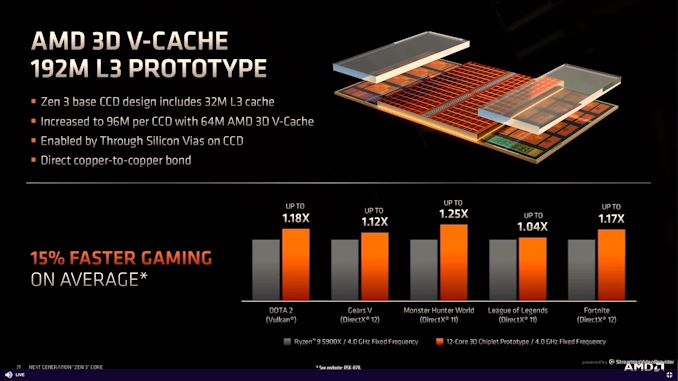
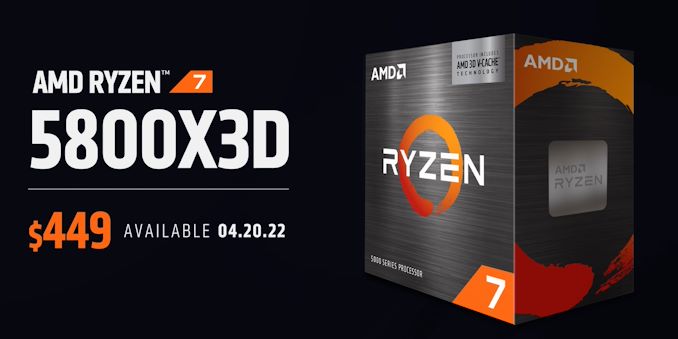


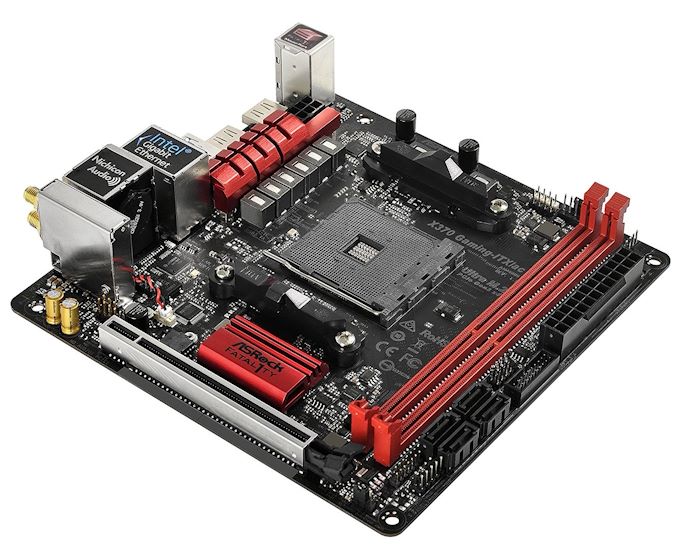
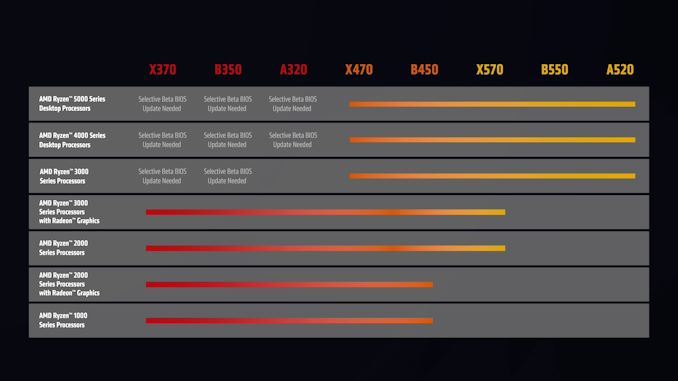








98 Comments
View All Comments
Wrs - Tuesday, March 15, 2022 - link
That's really going to depend on the boosts and heat island effect vs. the extra cache. For lightly threaded/CPU-bound tasks, on a 5900X two cores on separate chips can boost fairly high as neither significantly heats the other. Of course, if they're the same app using the same memory space, they effectively share 32MB of cache and that's cache-bound..Ryan Smith - Tuesday, March 15, 2022 - link
Thanks! I was meaning to make a single chiplet comparison there, but fumbled it.dwillmore - Tuesday, March 15, 2022 - link
No worries, I put in 5800x then I meant 5900x, so we all make mistakes. Thanks for the article.mode_13h - Tuesday, March 15, 2022 - link
> It's just 32MB more L3 cache as it's 64MB for the 5800X and 96MB for the 5800X3D> since the 5900X is a dual (6 core) die setup each with the full 32MB of L3
Here's where mere sums don't tell the whole story. I'll just quote from the original Zen 3 review:
"The Ryzen 7 5800X ... uses a single eight-core chiplet with a total 32 MB of L3 cache. The single .. chiplet (design) has some small benefits over a dual chiplet design where some cross-CPU communication is needed, and that comes across in some of our very CPU-limited gaming benchmarks."
https://www.anandtech.com/show/16214/amd-zen-3-ryz...
So, that explains AMD's rationale. Having 64 MB split across two chiplets means having to go through the I/O die for cores to get at half of it. Whereas AMD has quoted vastly higher throughput numbers for accessing L3 stacked on the same chiplet, which I'll quote from another article:
"AMD claims that the total bandwidth of the L3 cache increases to beyond 2 TB/sec, which would technically be faster than the L1 cache on the die"
https://www.anandtech.com/show/16725/amd-demonstra...
goatfajitas - Monday, April 11, 2022 - link
12 is alot of cores for normal workloads. Unless you are doing something very specific that needs that many cores... Most people would be better off with more cache. Thus the expected gaming improvements. - "AMD is specifically pitching this 8 core processor as the ultimate chip for gaming"Tilmitt - Tuesday, March 15, 2022 - link
Hype train!WaltC - Tuesday, March 15, 2022 - link
I thought this was a pretty good write up with one small exception...taking yesterday's high-end CPU/GPUs and cycling them back to the lower/bottom end of markets is nothing new or unprecedented. That's sort of routine, really. Zen 2 will be three years old this July, and to see it cycle back to the bottom end is hardly surprising, especially when the debut for Zen 4 is only a few months away, still slated for 2022.Mike Bruzzone - Friday, March 18, 2022 - link
@WaltC, Cycling back, good point, part of the AMD sales objective building a graded by gen and SKU performance CPU price rung stack in the secondary market supports every next generation price attempting to reach a new (by category and segment) price ceiling. Intel's been doing this in performance workstation / gaming mobile for a long time. Not as much as in desktop although did with Comet deca otherwise desktop price rungs have been fairly stable.At the back in time opposing product price floor, the foundation, also creates what is known as a carpet and both AMD and Intel and Nvidia have carpets designed to keep low cost : price commodity entrants out, coming up from under the floorboards as it were.
On CPU side ARM and Apple are being blocked with a carpet where Apple attempts to come in from the top but then think Snapdragon on Windows 10 and the world market for ARM consumer mobile that are generally devices priced less than $300. The carpet is a defensive move just like (over) segmentation.
In the Xeon market AMD Epyc and ARM both came in from over the top of Intel core grades because there were no performance price rung voids in the highly segmented, at the time, Xeon 4 to 24 core market.
Production of surplus, overage, also plays a part in this game because the overage holds channels financially on their inventory accumulated capital values. More surplus means more capital values that every broker holds and hopes they can flip by finding every next home for them before the component becomes obsolete. There were three times when this became a severe issue on Intel over acceleration of primary production sticking the channel with a prematurely obsolete inventory; in 2001, 2005, 2007/8. Intel did this to take back cartel (PC dealer) price making control from the channel. Today FTC Docket 9341 guards and monitors for this economically debilitating practice destroying accumulated capital value, and Intel has been reducing surplus production since Rocket because of the unnecessary costs involved both in terms of Intel production added cost. Less unwanted product every generation means cost optimization and lowers the risk of channel financial losses.
Intel has a mandate to reconfigure the enterprise from producing for supply to producing for demand that is a demand and supply balancing. This move supports industry commerce by reducing limits placed on competitors by any dominant manufacturer / producer attempting to hold a market through over production on surplus volume.
On the Vermeer Refresh front, AMD averaged 13 M units of Ryzen performance desktop per quarter in 2021. Intel Rocket Lake was around 27 M units most of it deadweight that should never have been produced and is affecting the channel financially in terms of inventory value cost : price margin losses that were primarily made up taxing buyers clandestinely on inflated sGPU pricing paid for a lot of channel's Rocket, Comet down bin and Coffee Refresh single thread mid shelf losses so it does still happen but improving. I estimate Alder as a 30 M unit run that will be mirrored by Raptor.
Mike Bruzzone, Camp Marketing
Kangal - Tuesday, March 15, 2022 - link
I'm quite disappointed with the announcements.There's not much performance uplift or price decrease really to get hyped about.
Ever since the Zen2 release, where AMD has matched and surpassed Intel. Well they've put on the brakes. Zen3 was an upgrade but not huge, yet prices were much higher. And the chip shortage/pandemic merely secured their place for an extra two years.
Even after the debut of the Apple M1, Pro, Max, and Ultra, which put Apple ahead of the industry giants (albeit on macOS) nothing much changed at AMD.
I'm hoping that has all been on purpose. That Zen4 is a proper upgrade over Zen3 (not just a +refresh), and that RDNA-3 is also substantial. And that AMD is going to slowly discontinue their chips which have Vega Graphics, and Zen2 architecture. That this is merely TSMC and AMD getting rid of potential stock.
You know start fresh. With a new mobo platform, new pcie standard, and new DDR5 memory. And they're all Zen4, RDNA-3, and APUs. Hopefully they will come at a more reasonable price, with no nasty surprises from security or availability.
mode_13h - Wednesday, March 16, 2022 - link
> Zen3 was an upgrade but not hugeLOL, wut?
Here's what Ian and Andrei wrote, in their conclusion of the Ryzen 5000 review:
"In real world benchmarks, we saw an average +24% performance gain"
"All things considered, we’re really impressed with what AMD has achieved here."
"Zen3 gets a gold award. No question."
But you know better? M'kay. It's just a pity they're not here to show you what's what.
> Even after the debut of the Apple M1, Pro, Max, and Ultra, ... nothing much changed at AMD.
AMD reacts to its market, its customers, and its partners. I doubt the M1 has caused huge disruptions in these areas, but maybe you can provide evidence demonstrating otherwise.
Even if you're right, what would you *expect* them to do? Pretty much the only knob they can twiddle, in the short term, is pricing vs. features. That's it. They can't turn-around a whole new CPU in even the time since the first M1 hit. The pipeline for new silicon is far longer than that.
In the current world where AMD is selling basically all the silicon it can get from TSMC at the current price structure, AMD is doing just fine. It doesn't need to do anything big... yet.
> I'm hoping ... AMD is going to slowly discontinue their chips which have
> Vega Graphics, and Zen2 architecture.
https://www.anandtech.com/show/17276/amd-ryzen-9-6...
TSMC 6 nm + Zen 3 + RDNA 2.
Okay, for a refresh, but that's about it. Doesn't really deserve 6000-series branding, but then it *is* a meaningful step beyond the 5000-series stack.
> You know start fresh. With a new mobo platform, new pcie standard, and new DDR5 memory.
That's AM5. I'm not 100% sure it'll adopt PCIe 5.0, but the other stuff will be there. So far, PCIe 5.0 on the desktop is just Intel playing the specsmanship game.
> Hopefully they will come at a more reasonable price
Pricing will be competitive. Expect nothing more and nothing less.